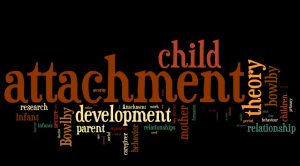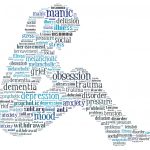“Every form of addiction is bad, no matter whether the narcotic be alcohol, morphine or idealism.” Carl Jung
Within my private practice, I work with an increasing number of clients who are struggling with what they describe as ‘porn addiction’. Despite each person’s own struggles and difficulties being specific and unique to them, there are frequent themes, and common factors that seem to feature regarding the development and maintenance of addictive and/or compulsive cycles of behaviour generally speaking. Indeed, there is a long-standing school of thought within psychological and addictive fields that “addicts” often manifest compulsive behaviours that are primarily forms of symptom substitution for overwhelming and/or uncomfortable emotion. These compulsive behaviours are effectively driven by an individual’s inability to develop and maintain healthy relationships, and therefore experience any sustained satisfaction from their interpersonal relationships, resulting in a perpetual cycle of unmet emotional needs (1). It is certainly true in my own professional experience, that clients that I collaboratively work with around these types of issues frequently have a history of childhood pain and trauma, and unmet emotional needs.
Many adults struggling with addictive behaviours regardless of their ‘weapon of choice’, be it drugs, alcohol, sex (including pornography), or food, in addition to a range of other potential resources or behaviours, have a history of unmet emotional and relational needs that have their roots in childhood (2). It is not uncommon for adults who struggle with porn addiction, and/or other sexually compulsive behaviours to have childhood experiences consisting of a home environment where their parents were overly strict, controlling, disengaged or emotionally unavailable for example (3). Thus, the child may experience intense feelings of loneliness, isolation, shame and guilt, that can become so emotionally overwhelming that they may develop, and ultimately turn to dysfunctional behaviours as a means of comforting, and soothing strong feelings of emotional rejection (4). Healthy, nurturing and stimulating relationships naturally generate powerful biochemical processes in the brain and body, that are both rewarding and necessary for healthy psychosocial, psychosexual and relational development. Therefore, from a neurophysiological perspective, the lack of such biochemical reward, can make a young person hungry for their missing neurological pleasure centres, that they may turn to addictions as a means of changing the way they feel, or numbing the pain of stress hormones (5). Dopamine is a natural pleasure and reward chemical secreted by the brain and drugs, cigarettes, alcohol, porn or food are all substances and/or behaviours that both stimulate and activate the dopamine pathways. Our brains and internal chemistry naturally produces a range of powerful and stimulating chemicals in response to addictive behaviours, that are extremely habit forming when abused, and so this represents an incredibly potent neurophysiological factor of the addictive process.
Working with clients around understanding the process of addiction, whilst assisting them in exploring their own relationship history as a means of identifying any potential origins of their harmful behaviours can be an effective place to begin treatment. Understanding potential triggers, managing urges and/or cravings, whilst developing additional skills for emotional regulation and tolerance all represent essential aspects of effective treatment. Psychotherapy treatment can assist and support clients to ultimately break free of their destructive cycles, and regain control of their lives.
References:
- Flores, P. J., (2004), Addiction as an Attachment Disorder. Jason Aronson, Plymouth
- Katehakis, K., (2016), Sex Addiction As Affect Dysregulation: A Neurologically Informed Holistic Treatment. W. Norton & Company, London
- Skinner, K, B., (2005), Treating Pornography Addiction: The Essential Tools for Recovery. Skinner Corp, Utah, USA
- Skinner, K, B., (2005), Treating Pornography Addiction: The Essential Tools for Recovery. Skinner Corp, Utah, USA
- Allez, G. H., (2009), Infant Losses, Adult Searches: A Neural and Developmental Perspective on Psychopathology and Sexual Offending (2nd Ed). Karnac Books, London





